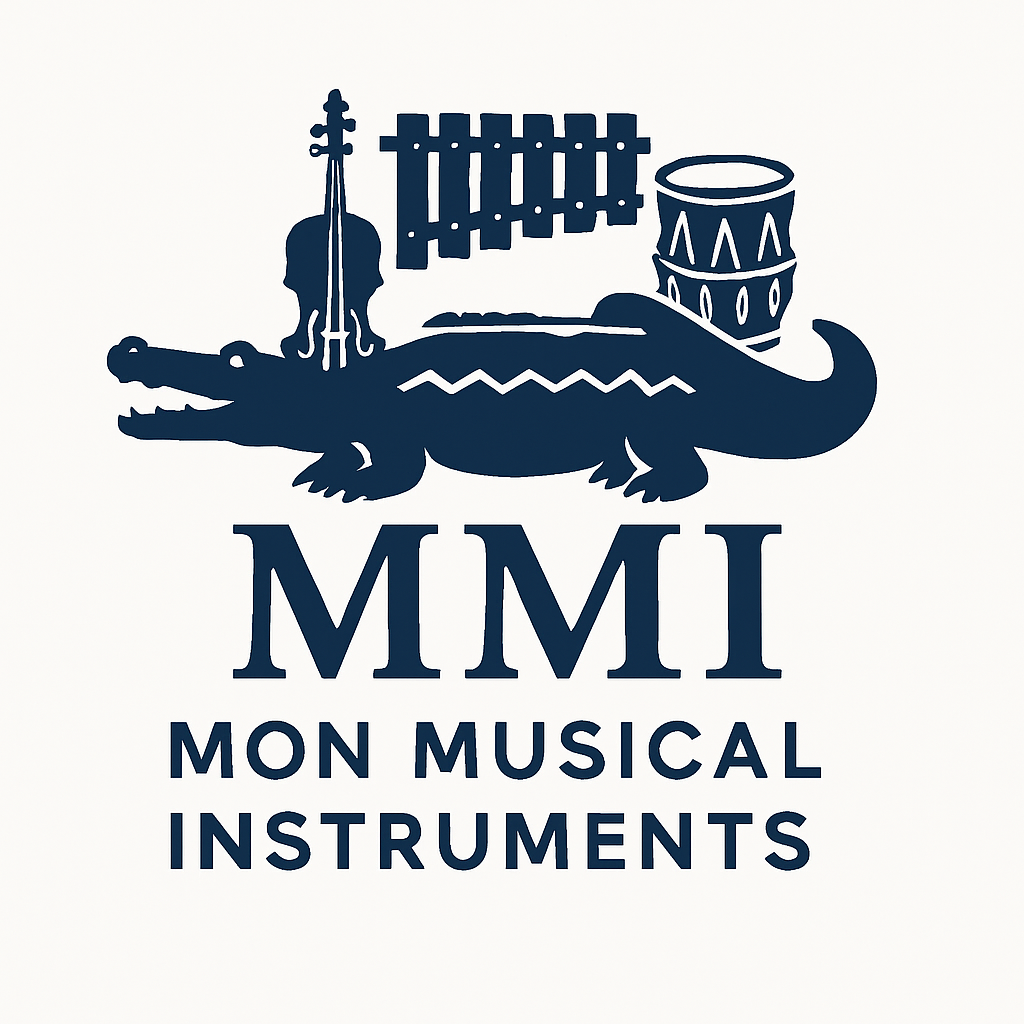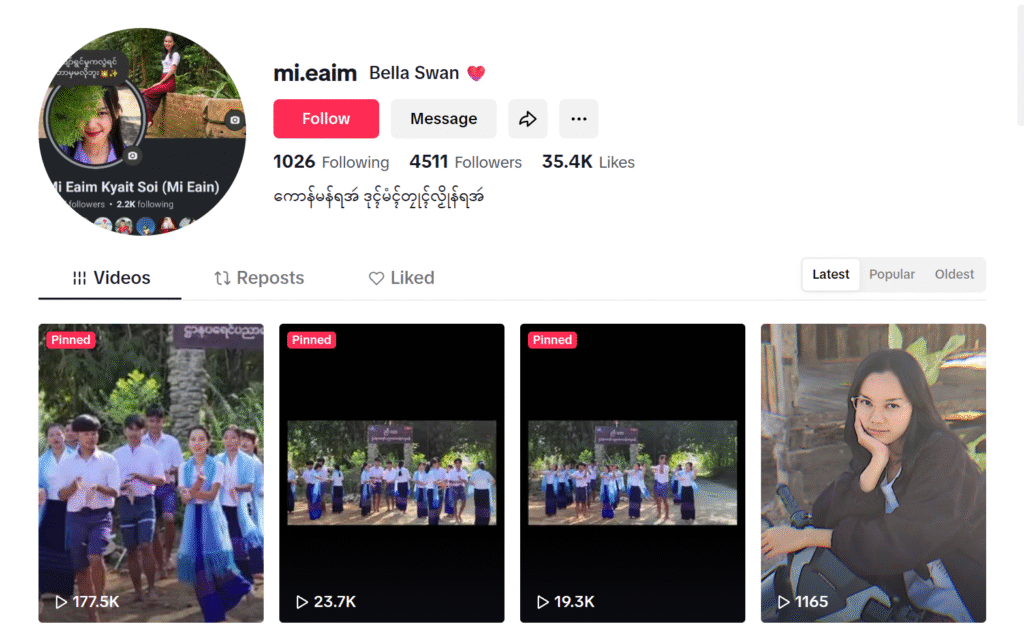What are percussion instruments?
Musical instruments that make sound when struck, shaken, or scraped are known as percussion instruments. They are employed in music to produce accents, add texture, and maintain rhythm. These instruments can be unpitched, like drums and cymbals, or pitched, like the xylophone. They are present in numerous musical traditions across the globe.
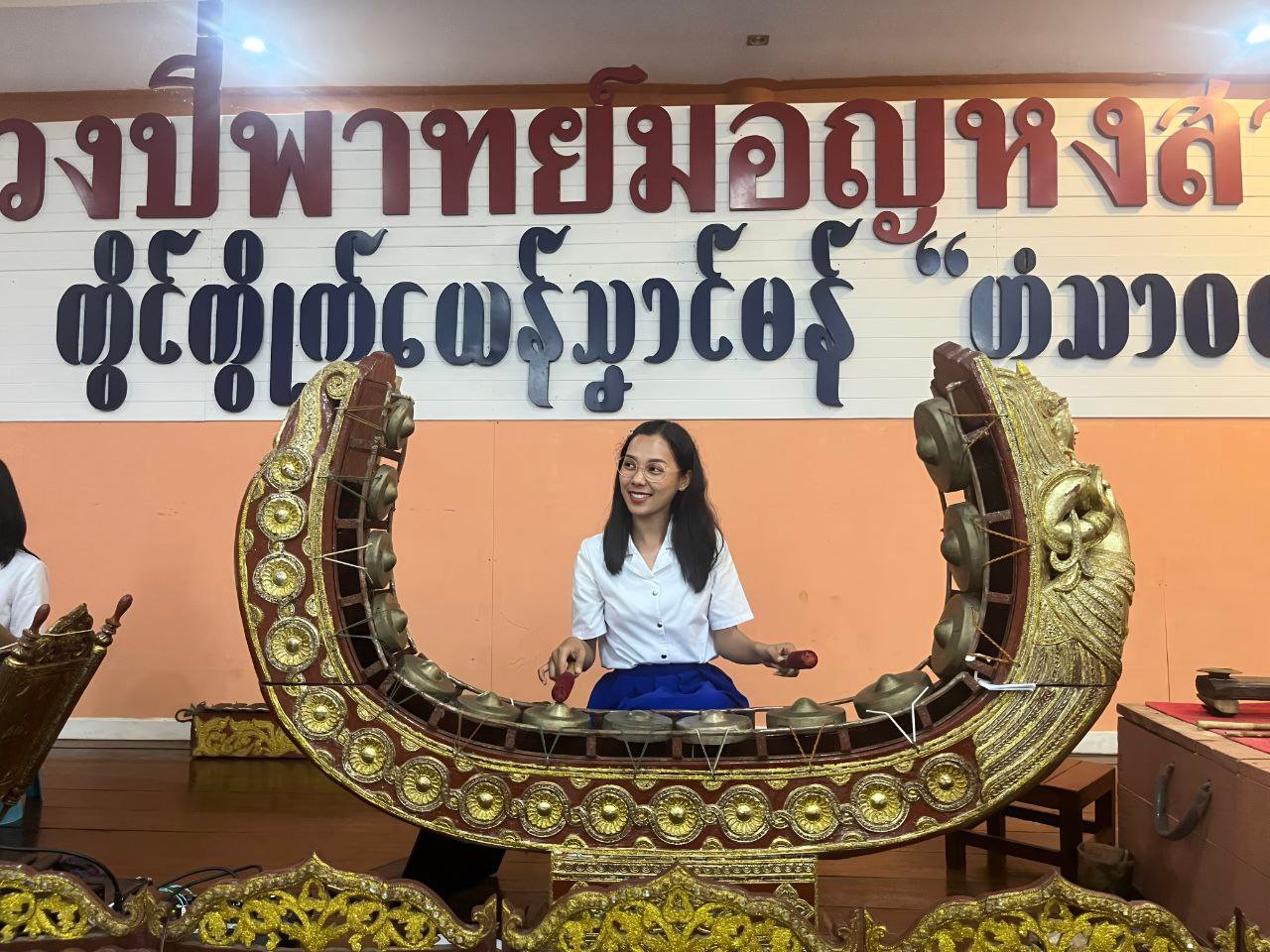
Vat-gine (Crescent-shaped Gong) Mon
Known for its distinctive crescent shape, the Vat-gine is a traditional musical instrument of the Mon people. It is constructed from cane, bronze gongs, and Yamanay wood. To make sure the wooden frame is well-seasoned and long-lasting, it is meticulously prepared by applying mud to the wood, removing the bark, and allowing it to dry naturally for six months.
Traditionally played during Nat (spirit) propitiation ceremonies, this instrument originally featured 14 bronze gongs arranged in a crescent shape. To expand its musical range, a fifth-note-tuned gong was added in 1962.
Mon Hak-Swal Xylo
One of the Mon people’s traditional musical instruments is the Mon Hak-Swal Xylophone. The frame is primarily composed of wood, such as mahogany or Yamanay, while the sound bars are composed of bronze metal. The instrument has a distinctive shape that resembles a crescent and is three-fourths of a circle. Traditional Mon musical instruments all share this shape.
To play the Hak-Swal, two mallets are used to strike the bronze bars, creating melodies. Its style of playing is quite similar to that of the Patala, a traditional Burmese xylophone used in Myanmar. Many traditional Mon performances, ceremonies, and cultural events utilize the Hak-Swal’s clear, bright sound. The instrument is crucial.
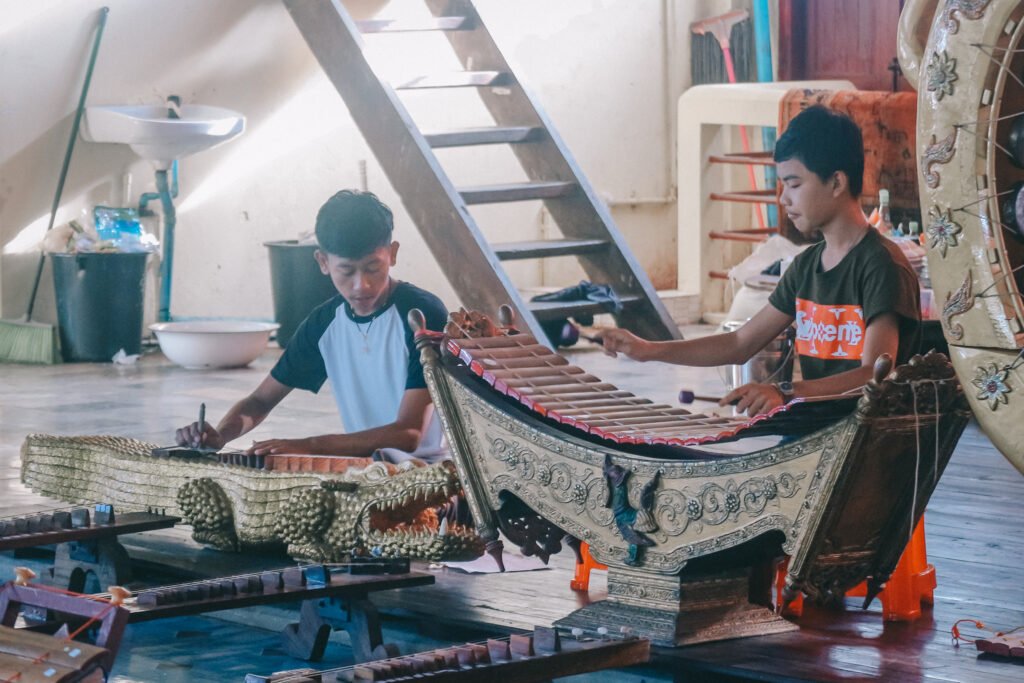
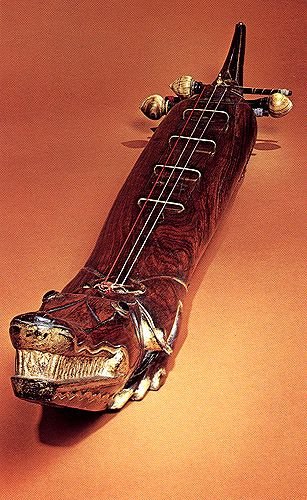
Mon Traditional Crocodile-shaped Xylophone
A distinctive percussion instrument made of iron and wood is the Mon Traditional Crocodile-shaped Xylophone. Reflecting the Mon people’s artistic legacy, the wooden body is expertly carved into the shape of a crocodile. Thirteen iron keys or slates, varying in size from roughly 2.25 inches by 1 inch to 3.5 inches by 1 inch, are spaced along the wooden frame.
The rope that connects these iron keys measures about 37 inches, from the crocodile’s head to its tail. The plectrum, a tiny stick or pick used to create distinct, melodic tones, is used to strike the iron keys of the instrument. The instrument’s dimensions are approximately 55 inches long, 6.5 inches wide, and 8.5 inches
References
Myanmar Gamelan. (2013, September 10). Instruments. Myanmar – WordPress.com. Retrieved July 3, 2025, from https://myanmargamelan.wordpress.com/instruments/
UNESCO ICHCAP. (2014, February 7). Mon traditional crescent gong [PDF]. International Information and Networking Centre for Intangible Cultural Heritage in the Asia-Pacific Region under the Auspices of UNESCO (ICHCAP). https://archive.unesco-ichcap.org/eng/ek/pdf/mon.pdf
Wongraman., O. P. (2022). Research on Classical Mon Music, Songs and Dances.
